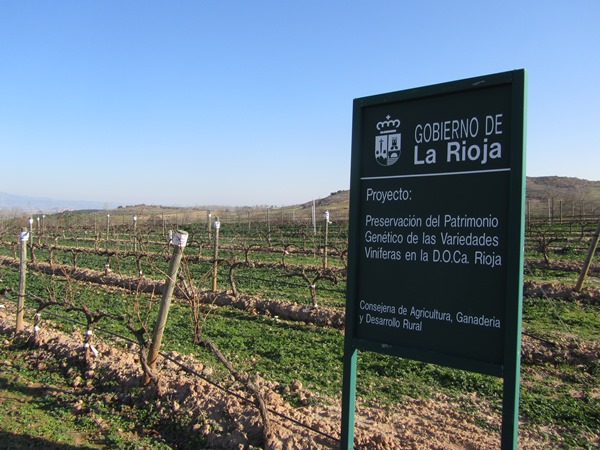La investigación debe atender a las necesidades de la “calle”
La Universidad de California en Davis ha dado a conocer a un grupo de viticultores las líneas de investigación en las que están trabajando. Un ejemplo de como la investigación recoge las necesidades de la “calle”, dedica sus medios y esfuerzo precisamente en ellas y comunica los resultados a quien corresponde. Es lo que se denomina transferencia tecnológica.
Les paso el artículo literal y el enlace por si quieren aumentar la información:
Santa Rosa, Calif.—David Block, chairman of the Department of Viticulture and Enology at University of California, Davis, recently shared several advances results in research as well as new opportunities for partnerships with the wine industry.
Speaking to an audience of members of the Allied Grape Growers during its annual meeting in Santa Rosa, Block said “Research is best thought of as an investment. Like financial investments, a diversified portfolio of research investments will be most effective over time.” He briefly presented five case studies:
• Chardonnay clones 4 and 5
• Elimination of cork taint
• Adams-Harbertson tannin assay
• Low water use rootstocks
• Impact of V&E teaching program on the California, U.S. and world wine industry
Chardonnay Clones
The available Chardonnay clones in the 1950s were uneconomic because of low yields (0.5 tons per acre). Over a 20-year period, grape geneticist Harold Olmo observed, selected, grew and released clones 4 and 5.
Now Chardonnay is the mostly widely planted variety in California at 92,000 acres. Nurseries estimate that 75% of these acres are clones 4 and 5.
Block estimates that the program cost less than a few $100,000 (2016 value). Between 1980 and 2012, the clones represented $14.5 billion in present value. “The return is so high that people can’t believe it.
” Cork taint ” (TCA)
The amount of 2,4,6-trichloroanisole (TCA) in wines increased in the 1980s and 1990s to affect nearly 6% of all wines. A new analytical technique that allows rapid sampling was developed by Susan Ebeler and Christian Butzke in 1995 and transferred to Electronic Testing Laboratories (ETS). The result was the Cork QC program and a major reduction in TCA rate. This saved $3.4 billion (2012 value) from 2006 to 2012, as the TCA rate dropped from 5% to 1%.
This development also cost less than $100,000.
Grape breeding in the Walker Lab
Andy Walker’s first rootstock breeding program released GRN-1 through GRN-5 (Grape Rootstocks for Nematodes) to resist aggressive strains of root-knot, dagger, lesion, citrus nematodes and phylloxera. Bred in 1993 and 1994, they were released to nurseries in 2008 and to growers in 2011.
The lab is now combining broad nematode resistance with salt and drought resistance, and advanced selections are in field testing. Wine grape breeding program The first few 97.5% V. vinifera Pierce’s disease-resistant selections are ready for release to nurseries in late 2016 and to growers in 2019.
These vines demonstrate the potential of classical breeding to 97% vinifera in about 10 years, grapes that progressed from peppery, herbaceous wines with blue-purple pigments to high-quality vinifera characteristics. About 20 more will be released in the next 10 years. They are classically bred with resistance from V. arizonica using DNA markers to optimize selection, not genetic modification. They have been field test tested with numerous industry-based wine tastings. The first commercial-scale wines will be made at Caymus in the fall of 2016.
Microbes in wine production
David Mills has been using next-generation sequencing tools that allow comprehensive tracking of all microbes to address such questions as:
• Do wineries establish a “house” microflora? (PlosOne 2012)
• Do different regions harbor different microflora on grapes? (PNAS 2013)
• Do incoming varietals have characteristic microflora? (PNAS 2013)
• Do different vineyard blocks have characteristic microflora? (mBio 2016)
• Do regional microbes influence wine? (mBio 2016)
Single-vine precision irrigation
Block and other researchers are developing a flexible, low-power, cost-effective system for precision irrigation of individual vines.
“Vineyard irrigation needs change spatially and with climate, but vines are currently irrigated in bulk. This means that water use is high in a vineyard, yet water resources are scarce. Grape quality could be improved by sensing the water status of individual vines and delivering the right amount of water at less than $5 per vine—maybe significantly less,” he said.
Researchers are trying to develop a system that is easy to install and maintain yet uses water more efficiency and increases wine quality. The first-generation proof-of-concept pilot single-vine resolution irrigation system is now installed and operational on 640 vines at Oakville experimental station.
Scientists at UC Davis are working on new ideas for inexpensive, reliable solutions to fluidics and sensing. Cypress Semiconductor, which also made a heavy investment in high-tech fermentation tanks, has invested $208,000 in UC Davis and University of Michigan and is working with them to develop the next generation of vineyard irrigation systems. (Block discussed this project at the recent ASEV national conference. For more on that presentation see the MOG blog.)
How much should be invested in research?
Block concluded his talk with the question of how much should be invested in research: “You need to start with an industry vision, then move to a research vision to accomplish industry goals. Figure out how much is needed to fund this vision and how it will be funded.” He summed, “This creates the opportunity for critical partnership.”
Read more at: http://www.winesandvines.com/template.cfm?section=news&content=172816
Copyright © Wines & Vines

